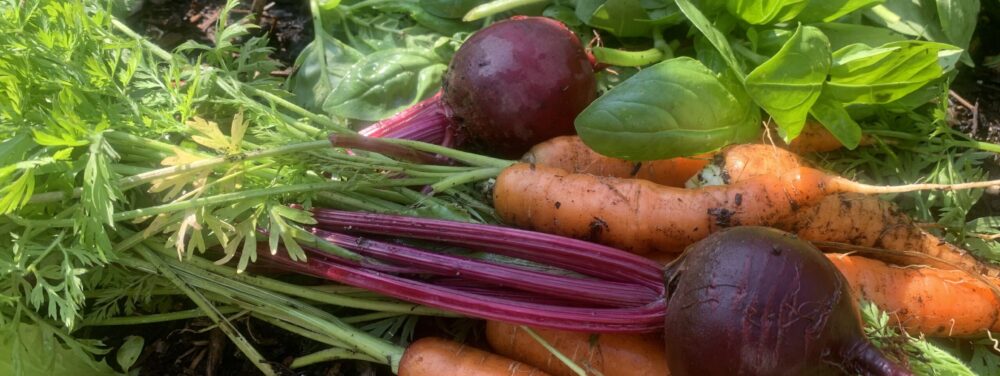Peas love cool weather, so peas are often one of the first vegetables we can plant in early spring.
There are three main types of peas: shelling peas, snap peas, and snow peas. Shelling peas have an inedible pod and are typically grown for their plump peas. Snap peas (also called sugar peas) have edible, yummy pods, and large peas. Snow peas have flat pods and small peas—the kind often used in stir fries. Grow the varieties of peas that you know you’ll enjoy eating.
Here’s how to plant, grow, and harvest peas.

Preparing To Plant Peas
Soak the pea seeds in water overnight before planting. This is optional, but soaking the seeds will help your peas germinate.
Dig compost into your soil. Peas create their own nitrogen as they grow, so don’t worry too much about adding nitrogen-rich matter like manure.
Choosing A Location And Preparing Your Soil
The best soil for growing peas is soil that drains well and is rich in organic matter.
Peas need full sun to grow and thrive.
Plant your peas in an area where you can install a trellis or pea netting for the pea vines to attach to and climb.
If you can, grow your peas next to carrots, corn, lettuce, radish, spinach, and turnip. This is optional. These companion plants are beneficial to peas, but not necessary for their growth.
Don’t grow peas next to onions. Onions can stunt peas’ growth.
Planting Peas
When To Plant Peas
Peas can be planted directly outside when the soil temperatures reach about six degrees. In the Pacific Northwest, this is usually in early spring.
Although peas will germinate in cool soil, starting some or all your peas indoors gives them a head start. If you want to start growing peas early in the growing season, start them indoors in late winter or early spring.

After the peas germinate, place them on a sunny windowsill or under grow lights. If growing on a sunny windowsill, rotate the pots or cells 180 degrees every day. After about 3 weeks, harden off the pea vines and transplant them outside.

If you want a fall supply of peas, try planting peas in late summer (or 8 weeks before your first fall frost date). Peas like cooler temperatures, so the trick is to plant them soon enough for them to have enough time to grow before the cool fall temperatures, but also so the summer heat isn’t too much for them.
How To Plant Peas
Depth to plant seeds: 1 inch
Seed spacing: 2 inches between seeds
Row spacing: 18 inches between rows
Water regularly enough to keep the soil damp while you’re waiting for the seeds to germinate.
Don’t forget to label your peas with the name of the variety, and the date you planted them. You might even want to write the number of days it takes for them to grow.
Growing Peas
Now that you’ve planted your peas, be patient and enjoy their flowers. Peas take about 60 days to grow.
How To Support Your Peas
Peas are climbers, so install a trellis, stakes, or pea netting at the time of planting. This will keep the vines from sprawling on the ground.

How To Fertilize Your Peas
Peas produce their own nitrogen as they grow, but they will benefit from some phosphorus or potassium as they grow. Bone meal and kelp meal can help. Bone meal provides phosphorus and kelp meal gives potassium.
How To Water Your Peas
Peas prefer consistently moist soil, especially during the flowering and pod-setting stages. Water the plants regularly. Keep the soil damp but not waterlogged. You can mulch around the plants to help keep the soil moist.
Remember To Weed Your Peas
Every week, check for weeds growing around your peas and remove the weeds.
Harvesting Peas
Harvest your peas regularly (every day or every second day). Picking peas encourages new flowers to form and those new flowers will turn into more pea pods. So the more you pick, the more your plants will produce.
If you’re growing shelling peas and snap peas, and the pea pods are bulging, it’s likely time to harvest. Remember, if you planted snow peas, the peas stay small, so the pods won’t bulge. Pick snow peas when they are at a size you like without waiting too long. If you wait too long to harvest peas, they will look dry and dull and taste woody.

Experimenting With Peas
Now that you know how to plant, grow, and harvest peas, try growing extra peas to enjoy in the winter. Harvest the extra peas, shell them, and freeze the peas in a bag. Every time you harvest your extra peas, continue to add the peas to your frozen winter pea bag. In the winter, they add a touch of summer sweetness to winter soups and stews.
Planting and growing processes can be a bit different if you’re growing a different variety of the same vegetable. So, if the information here differs from the instructions on your seed packets or packages, always follow what your seed packets or packages tell you.


